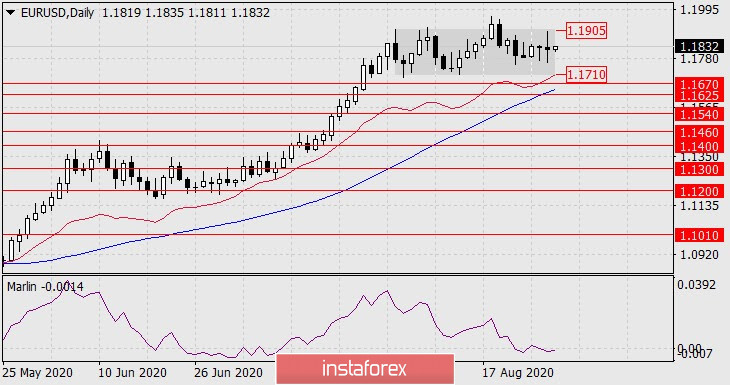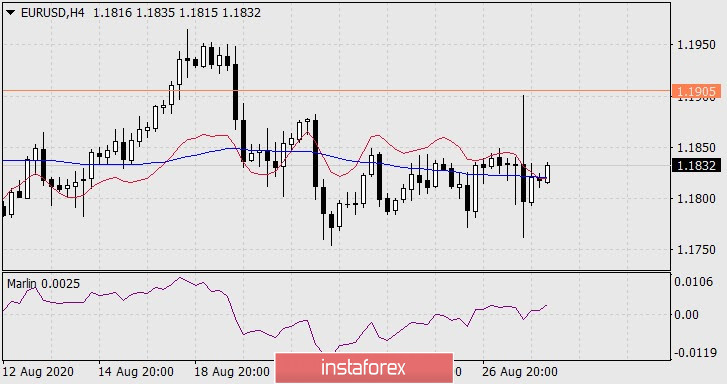EUR/USD
Federal Reserve Chairman Jerome Powell made a keynote speech at the Jackson Hole online conference on Thursday, in which he modified the central bank's attitude to inflation and employment. Now the Fed can raise the rate when inflation is slightly higher than 2.0%, and employment will be assessed by such a criterion as the lack of jobs. Powell cited the example of failed rate hikes during the Paul Volcker administration (the 1980s), which subsequently (after defeating it with its 14 percent increase due to the oil crisis) led to high unemployment (10.8%) and pulled down inflation to low levels for a long time.
Well, the Fed's fears are very well founded, because now the main reason for the unwinding of inflation will not be the Fed's rate, but the incredible liquidity poured into the free market in the form of subsidies and allowances during the coronavirus crisis, which Powell did not mention. This is why, in our view, the Fed refused to consider employment without reference to inflation, so that the investment community (and Congress) would not pressure the central bank to delay raising the rate when employment becomes high.

Yesterday, the range of fluctuations in the euro was 140 points due to Powell's speech,
and the upper shadow of the daily candle reached the upper limit of the uncertainty range of 1.1710-1.1905. As a result, the day ended near the opening level. The signal line of the Marlin oscillator has deepened into negative territory. Now it is logical to expect the euro to reach the lower limit of the range with an attempt to overcome it and further decrease.

The price settled by the MACD line on the four-hour chart. Marlin is slightly higher than the neutral line, but in the current situation, it already repeats the sideways movement of the price and therefore is not so indicative. We are waiting for the price in the range of 1.1625/70, which has already implemented the MACD line of the daily timeframe.





















